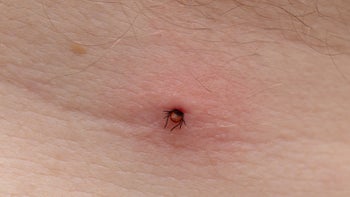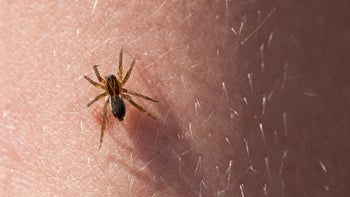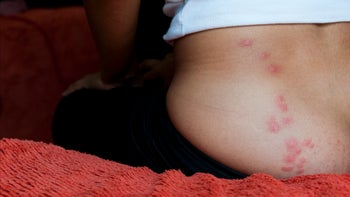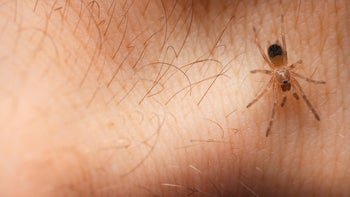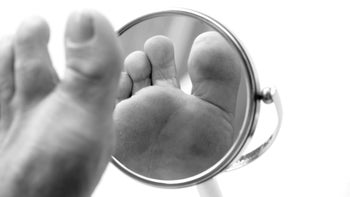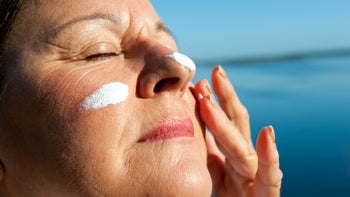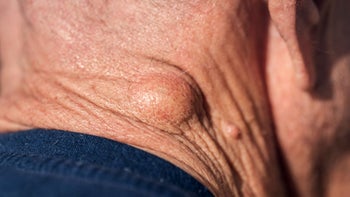
4 Tips That Can Help Get Rid of Peeling Skin on Your Hands Fast
Key takeaways:
A lot of things in the environment can strip away your skin’s protective oils and cause peeling skin on your hands.
Home remedies like moisturizers and gentle exfoliants can relieve discomfort and help dry, peeling skin heal.
People with medical conditions like eczema and psoriasis may need specialized treatment for peeling skin. And it often takes weeks of treatment before things improve.

Many people experience peeling skin on their hands during the dry winter months. For others, peeling skin is a year-round issue.
Your skin acts as a protective barrier against the environment. Natural oils help maintain this barrier and keep skin healthy. But your skin is constantly exposed to things that can strip away moisture — like sunlight, wind, and heat. The skin on your hands is even more vulnerable because it’s exposed to everything you touch. Everyday contact with things like cleaning supplies, metals, and make-up, can trigger skin irritation and peeling.
If you’re struggling with dry skin, here’s how to help get rid of peeling skin on your hands fast.
Search and compare options
What can cause peeling skin on hands?
Your hands touch things all day long. This exposes your skin to a variety of irritants that can cause dryness and peeling. The most common skin irritants aren’t harsh chemicals but everyday things like:
Soaps
Rubbing alcohols
Scented lotions
Makeup
Sunlight
Cleaning products
Chlorine from pool water
Metals, especially nickel
Latex
Forced hot air (from heating systems)
Cold air
Certain medical conditions can also cause your skin to peel, like:
Often, a mix of several of these things lead to peeling hand skin. Regardless of the cause, similar remedies can help treat peeling skin on your hands.
How can you get rid of peeling skin on your hands?
No treatment will get rid of peeling skin right away, but these options can provide quick relief. And consistent use will heal peeling skin over time.
Let’s look at the evidence behind four treatments for peeling skin.
Building a skin care routine? Our experts review the best skin regimens for every skin type.
Hand eczema can cause peeling skin on your hands. Here are five tips to help you get hand eczema under control.
Not sure if you have hand eczema or ringworm? Our picture guide can help you spot whether eczema or fungus is causing your skin to peel.
1. Moisturizers
As the name suggests, moisturizers improve skin health by adding moisture. In addition, moisturizers help your skin by:
Locking in moisture
Covering small breaks
Protecting it from friction (damage from rubbing)
Relieving itching
Promoting healing
Most moisturizers contain a combination of ingredients that work in different ways to repair your skin. These include:
Occlusives, like petroleum or oil-based substances, that prevent water evaporation
Humectants, which draw water into your skin from the air and deeper skin layers
Emulsifiers, which help the different ingredients in moisturizers stay blended together
Read more like this
Explore these related articles, suggested for readers like you.
The best time to apply a moisturizer is within a few minutes of bathing or washing your hands. This helps “lock-in” moisture from the water that you just used.
Moisturizers come in creams, ointments, and lotions. Creams and ointments tend to work better than lotions, which are more water-based. For very dry skin, try applying a thick ointment to your hands before bed and wearing soft cotton gloves. This will help keep moisture in your skin.
Most moisturizers make your skin feel better right away. With consistent use for two weeks, you’ll likely see lasting improvements.
2. Exfoliants
Dry skin can look flaky. Exfoliants help remove dead skin cells on the outer layer to reduce flaking and peeling. Exfoliants are helpful because they only remove the topmost layer of skin that’s already flaking off. They don’t injure the healthy skin underneath like other methods do, such as pulling on peeling skin. Pulling or picking at peeling skin can injure healthy skin and cause more problems.
There are two types of exfoliants: chemical and mechanical.
Chemical exfoliants dissolve the bonds between dead skin cells. This makes it easier to remove the outer layer of dead skin. Chemical exfoliants include:
Alpha hydroxy acids (AHAs) like glycolic acid
Beta hydroxy acids (BHAs) like salicylic acid, which are particularly good for oily, acne-prone skin
Polyhydroxy acids (PHAs), which help gently exfoliate sensitive skin
Mechanical exfoliants use brushes, sponges, or scrubs to physically remove dead skin cells and flaky skin. Mechanical exfoliation can irritate dry or sensitive skin. So, if you have dry skin, experts recommend gentle chemical exfoliation instead.
How often you should exfoliate depends on your skin type. People with dry skin may only need to exfoliate once or twice a week. Over-exfoliating can cause further skin irritation.
3. Avoid irritants
Irritants can trigger dry skin by stripping away your skin’s natural oils and moisture.
How can you avoid irritants? It depends on the specific irritant, but these tips can help reduce exposure:
Bathe with scent-free soaps.
Limit your bath or shower to 5-10 minutes.
Pick scent-free laundry detergents.
Use a humidifier during the winter months to add moisture to the air.
Protect your skin every day with sunscreen.
Take an antihistamine if allergies trigger your dry skin.
Wear gloves when using cleaning products.
4. OTC hydrocortisone
If these treatments don’t work and your skin is still flaking, over-the-counter (OTC) hydrocortisone cream may help relieve itching and peeling.
Hydrocortisone is particularly helpful for treating peeling skin when it’s also inflamed and itchy.
But topical steroids have side effects, so they should only be used for short bursts.
Apply a thin layer to affected areas 1 to 4 times daily for up to 7 days. You can also layer moisturizers over hydrocortisone to seal in the medication and hydrate your skin.
How long does it take for peeling skin to heal naturally?
If your skin is peeling because of cold weather or contact with an irritant, it will get better within a few days if you stay away from the irritant and use home remedies.
But if your peeling skin is caused by an underlying medical condition, it may take several weeks for your skin to heal. Finding the right prescription treatment can help your skin heal faster.
When should you seek care for peeling skin on your hands?
Seek care if your peeling skin is getting worse or doesn’t get better within a week despite using home remedies and avoiding irritants.
Dry skin can increase your risk of infection due to cracks where bacteria can get in. Seek care if you experience signs of skin infection, like:
Oozing or discharge
Extreme redness
Tenderness
Bleeding
You should also seek care if you have a history of a skin condition like eczema or psoriasis. Peeling skin can be a sign that your skin condition is getting worse. You may need prescription treatment to help your skin heal.
The bottom line
Skin peeling on hands is often caused by exposure to irritants in the environment. Home remedies like moisturizers and exfoliants can help relieve your symptoms. Avoiding irritants that trigger your peeling skin will also help. However, no therapy will allow you to get rid of peeling skin overnight.
Why trust our experts?



References
American Academy of Dermatology Association. (n.d.). Dry skin: Who gets and causes.
American Academy of Dermatology Association. (n.d.). How to safely exfoliate at home.
American Academy of Dermatology Association. (n.d.). Kidney disease: 11 ways it can affect your skin.
American Academy of Dermatology Association. (n.d.). Thyroid disease: A checklist of skin, hair, and nail changes.
American Academy of Dermatology Association. (2024). Dermatologists’ top tips for relieving dry skin.
American Diabetes Association. (n.d.). Diabetes and skin complications.
Grimes, P. E., et al. (2024). The use of polyhydroxy acids (PHAs) in photoaged skin. Cutis.
Harwood, A., et al. (2024). Moisturizers. StatPearls.
Karwahl, K., et al. (2023). Topical AHA in dermatology: Formulations, mechanisms of action, efficacy, and future perspectives. Cosmetics.
MedlinePlus. (2018). Hydrocortisone topical.
MedlinePlus. (2022). Chapped hands.
Purnamawati, S., et al. (2017). The role of moisturizers in addressing various kinds of dermatitis: A review. Clinical Medicine & Research.
Weber, T. M., et al. (2012). Treatment of xerosis with a topical formulation containing glyceryl glucoside, natural moisturizing factors, and ceramide. Journal of Clinical and Aesthetic Dermatology.





